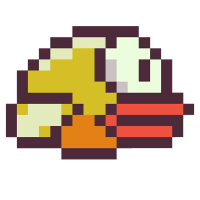Debugging Symbols
When invoking a C++ compiler, several options/flags can be passed, including optimisation level, pre-processor defines, and whether to include debugging symbols in the binary. These symbols are effectively mappings between binary addresses and source code (file, line number, symbol name, etc), which a compatible debugger can use. Including debugging symbols dramatically increases the size of the resulting binary, often by orders of magnitude.
A debugger (given an executable with debugging symbols) offers many useful features, such as stepping through code one line at a time, setting breakpoints, watching variables, changing values stored in memory, the entire call stack (when broken), etc.
g++ / clang++ will embed debugging symbols when -g is passed as a compiler flag/option (/DEBUG:FULL for MSVC).
Most C++ runtimes also provide a “debugging mode”, which enables bounds checking on containers, sets dangling pointers to a special value, etc., at the cost of performance.
This is enabled on libstdc++ by defining _GLIBCXX_DEBUG, either via a compiler option or directly in every source file (/MTd or /MDd option for MSVC).
Build Configurations
A set of compiler options (and the source files) can be bundled together as a build configuration on most build tools, such that building that configuration will automatically pass the relevant options to the compiler when compiling a source file.
In CMake this is expressed via CMAKE_BUILD_TYPE (except for multi-configuration generators, like Visual Studio / Xcode); the defaults are:
Debug(debugging symbols are added by default, but_GLIBCXX_DEBUGis not defined by CMake!)Release(optimised for speed)RelWithDebInfo(with debug symbols)MinSizeRel(optimised for size)
Because of the overhead of symbols and debug mode, these are generally disabled by default, except for Debug configurations.
Note: the most common debugger on Linux is gdb, while clang ships with lldb (both debuggers are cross-compatible).
